1. Rock of Cashel
LOCATION: Set on a remarkable outcrop of limestone rising some 300 feet above the plains of Tipperary the former seat of the Kings of Munster looks over towards the Comeragh Mountains and the Galtee Mountains. The Munster Kings, much like ourselves, obviously enjoyed a nice view.
AGE: The Rock was the seat of Munster royalty from about the end of the 4th century until 1101, when King Murtagh O'Brien granted it to the Church.
SIGNIFICANCE: It was amidst the Rock of Cashel's operatic grandeur that St. Patrick preached his Shamrock Sermon, according to our old friend 'Legend'.
STATUS: The Rock of Cashel is a National Monument owned by the Office of Public Works.
2. Brú na Bóinne, Co. Meath
LOCATION: On a wide bend on the River Boyne in Co. Meath.
AGE: More than five thousand years old, and still going strong, the prehistoric stone structures of Brú na Bóinne, were an attempt by the early Irish to communicate with the we-know-not-what.
STYLE: Almost minimalist in appearance, and to be honest, the structures themselves aren't hugely spectacular from the outside; doubtless the locals stood around at the time saying, "Ach, I don't hold with all this new-fangled architecture. . . ."
SIGNIFICANCE: Brú na Bóinne's historical significance is immense — these are amongst the oldest buildings in Europe.
Brú na Bóinne is also remarkable for a small piece of drama that has taken place every winter solstice for the last five thousand years.
At dawn on December 21, a pencil of sunlight penetrates the Neolithic burial chamber of Newgrange, the main structure, lighting it up for twenty minutes — before darkness falls for another year.
The huge structure built by our forebears is perfectly aligned so that the first rays of the winter solstice sun pierce through a small opening in the chamber's roof and travel nineteen metres (or approximately 57 feet in Neolithic measurements) along a narrow stone passage to focus on the entrance to the building.
STATUS: Brú na Bóinne is under the protection of the Office of Public Works. It is a UNESCO World Heritage Site.
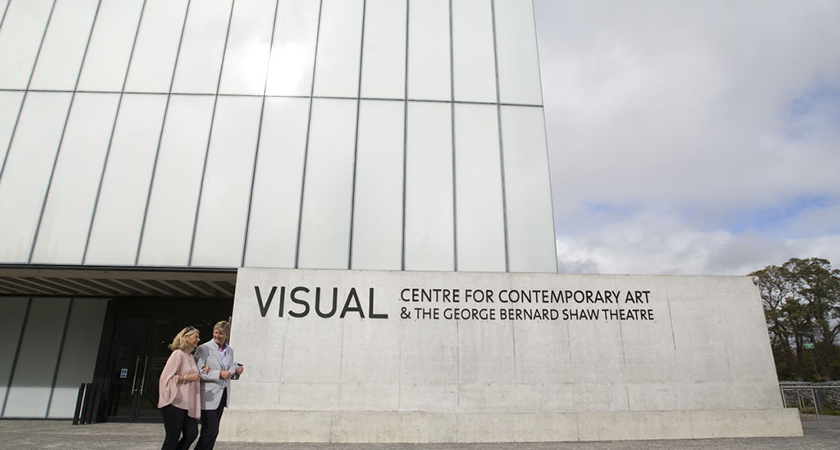 3. The Visual Centre for Contemporary Art, Carlow
3. The Visual Centre for Contemporary Art, Carlow
LOCATION: On the Old Dublin Road, Carlow, Co. Carlow.
AGE: The centre opened in 2009.
STYLE: One of the finest modern buildings in Ireland, dripping with aesthetic appeal.
SIGNIFICANCE: Eye-popping modern architecture isn’t all that easily come by in Carlow. Castles, yes, magnificent formal gardens certainly, and the odd cathedral and church. But the county’s architectural heritage was augmented by this stunning art space in the grounds of St Patrick’s College.
STATUS: Visual is funded by various statutory and arts bodies.
4. Dunluce Castle, Co. Antrim
LOCATION: Dunluce Castle, so dark and dramatic it looks as if it might have been directed by Otto Preminger, is perched on a coastal limestone crag — separated from the main body of Co. Antrim by a yawning chasm of churning sea.
AGE: The castle is built on the site of a fortification dating back to before pre-Christian times. But it was the Normans in the 13th century who transformed it into the definitive building it is today, a place so foreboding that it makes Castle Dracula seem welcoming.
SIGNIFICANCE: Originally in the hands of the de Mandevilles, an early Norman family, the celebrated Sorley Boy O'Donnell then seized Dunluce and refurbished the place thanks to the Spanish Armada’s foundering on the Giant's Causeway nearby. The Spanish gold came in very handy, thanks very much. He wanted to rename it Dun Theivin', but decided against it.
Over the centuries ownership was disputed during regular handbags between the English and the locals, with the castle finally ending up under the stewardship of the Earl of Antrim.
Dunluce’s most recent brush with fame has been in Game of Thrones where it acts the part of the House of Greyjoy — a 'des res' for Balon Greyjoy, Lord Reaper of Pyke, and his brothers.
STATUS: Dunluce Castle is under the protection of the Northern Ireland Environment Agency, and is officially a Monument in State Care. No matter what the Greyjoys say.
5. Lissadell House, Co. Sligo
LOCATION: Situated amidst woods and glades on the north shore of Sligo Bay.
AGE: The house was built between 1830-1835.
STYLE: The house is an impressive Grecian neo-classical pile.
SIGNIFICANCE: Lissadell is noted because of its beautiful surroundings, its history — which includes being mortgaged during the Famine — and its literary connections. The house was the childhood home of Irish revolutionary, Constance Gore-Booth, her sister the poet and suffragist, Eva Gore-Booth, and their siblings. Poet W.B Yeats, a frequent visitor, is buried close by in Drumcliffe cemetery. Lissadell remains one of Ireland's most significant buildings.
STATUS: Lissadell House is privately owned, but is on the Record of Protected Structures.
6. Stormont, Belfast
LOCATION: On the outskirts of North Belfast, not far from where Van Morrison wrote Cyprus Avenue.
AGE: Edward, Prince of Wales (later King Edward VIII) officially opened the building in 1932.
STYLE: Officially called Parliament Buildings, it was designed by Sir Arnold Thornely in the Greek classical style and fronted in Portland stone.
SIGNIFICANCE: Once called the biggest county council building in the world, Stormont is a huge imperial edifice. By any measure it is an overblown extravagance given that its offices administer the affairs of barely enough people to fill a telephone book.
Yet the building has grace, beauty — and of course huge historical significance. Kings, queens, loyalists, rebels, two American presidents, three Taoisigh and many more have all processed up the mile long drive to the imposing entrance — as has the hearse carrying the body of George Best. The Great Hall was used for his funeral service.
STATUS: Stormont remains a functioning government premises under the auspices of the NIO and is a Grade B+ Listed Building.
7. Castle Ward House, Co. Down
LOCATION: In the townland of Castleward at the mouth of Strangford Lough, in Co. Down.
AGE: Dates back to the 18th century.
STYLE: The most striking aspect of this house overlooking Strangford Lough is its dual architecture. The entrance side of the building is in classical style, the opposite side distinctly Gothic.
HISTORY: The eccentric structure arose out of a dispute between the owner and his wife, Viscount Bangor and Lady Anne Bligh. The compromise arrived at after their ill-natured squabble was this memorable building.
SIGNIFICANCE: Castle Ward is regarded by many as the first building to exhibit freedom of design, in the middle of the 18th century.
STATUS: Castle Ward House is owned by the National Trust. It is a Grade A Listed Building.
8. Glasnevin Cemetery Visitors’ Centre and Museum, Dublin
LOCATION: Glasnevin, north Dublin.
AGE: Opened in 1832, the cemetery has been graced with a visitors centre and museum since 2010. It was designed by architects A & D Wejchert.
STYLE: The multi award-winning Visitors Centre has exhibitions over two floors, showing the social, historical, political and artistic development of modern Ireland through the lives of the generations buried in the necropolis.
SIGNIFICANCE: The cemetery is the last resting place of Éamon de Valera, Michael Collins and Daniel O'Connell plus many more of Ireland's patriot dead; Brendan Behan and Luke Kelly lie interred alongside revolutionaries, poets, cardinals and archbishops. Here too are the graves of Gerald Manley Hopkins and Zozimus, as well as a plot dedicated simply to Cholera victims, and another remembering the Famine.
STATUS: Glasnevin is owned and administered by the Glasnevin Trust.
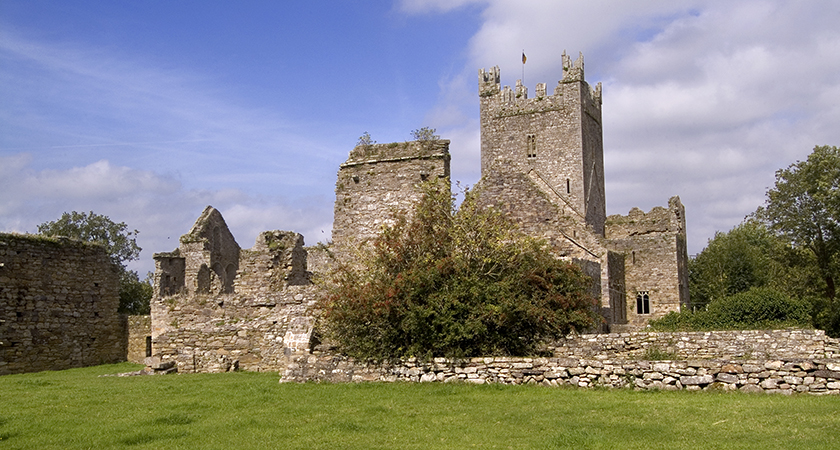 9. Jerpoint Abbey, Co. Kilkenny
9. Jerpoint Abbey, Co. Kilkenny
LOCATION: Co. Kilkenny, near Thomastown, nearby the abandoned mediaeval village of Newtown Jerpoint.
AGE & HISTORY: Jerpoint Abbey is one of the finest Cistercian monastic ruins in Ireland. Constructed in 1180 by Donogh O'Donoghoe Mac Gilla Patraic, the King of Osraige, the abbey flourished until the Dissolution of the Monasteries by Henry VIII.
SIGNIFICANCE: Newpoint Jerpoint is home to the ruined St Nicholas Church. Local legend holds that this is the last resting place of St Nicholas himself. But a move some years ago by a local businessman to rename Jerpoint Abbey “Jingle Bells Abbey”, in order to cash in on the Santa Claus factor, was unsuccessful.
STATUS: Jerpoint Abbey is a protected building owned by the Office of Public Works.
10. Ulster Museum, Belfast
LOCATION: Botanic Gardens, in the Stranmillis area of Belfast.
AGE: The museum’s modern wing, in the Brutalist style, was the subject of much criticism when it was built in 1960s Norn Iron.
STYLE: The museum remains the most powerful example of Brutalist architecture in Ireland.
SIGNIFICANCE: The Ulster Museum still has much of its traditional swag including an Egyptian mummy, Viking artefacts, treasure from the Spanish Armada which foundered off the Antrim coast, and exhibits from the North's less than boring history.
STATUS: The Ulster Museum is a Grade B1 Listed Building.
11. Crown Liquor Saloon, Belfast
A pub naturally has to feature somewhere amongst Ireland’s most historic buildings, and we've plenty of choice — from Kelly’s Cellars in Belfast where finishing touches were applied to plans for the 1798 Rebellion to Ryan’s in Dublin where the philosopher Wittgenstein used to drink. And philosophise. But after careful consideration we’ve gone for the Crown Liquor Saloon
LOCATION: Despite sounding as if it has tumbled out of a Western, the Crown Liquor Saloon is in fact on Great Victoria Street, central Belfast.
AGE: The pub has been tending to Belfast's thirsty people since the late 19th century.
SIGNIFICANCE: Without doubt one of the great bars of the world, this gem of Victorian splendour is still a vital part of Belfast's everyday life. Decorations include bits that should have by rights been on the Titanic — shipbuilders from Harland & Wolff would drink there, and sometimes pay of debts with nice luxurious ships’ lamps, chandeliers and the like.
STATUS: The Crown is owned by the National Trust and is a Grade A Listed Building.
12. Kylemore Abbey Gardens, Co. Galway
LOCATION: Connemara.
AGE: Built between 1867 and 1871.
HISTORY: Mitchell Henry, a wealthy doctor, originally ensured the garden embodied all the latest in Victorian horticultural fashion – beds of annuals engraved on a carpet of verdant lawn, a fern garden, a wooded arboretum with a babbling stream, a walled orchard and a huge kitchen garden. Most notable of all were the great glasshouses heated by three boilers servicing 5000 feet of piping — so that here in the middle of 19th century Connemara the owners were able to enjoy the exotic likes of grapes, figs, bananas and peaches.
However tragedy takes no heed of social class and by the end of the century Doctor Henry had lost both his wife and daughter. He sold up, and the gardens fell into disrepair.
By the time the Benedictine nuns bought the property in 1920 renovation seemed impossible. And there the matter would probably have lain were it not for the indefatigable Sister Magdalena who galvanised community effort to restore the gardens. Through bank loans, donations and government and international funds the gardens have been totally restored – and most of the original character of the gardens recovered.
STATUS: Kylemore Abbey remains in the hands of the Benedictine Order.
13. Croke Park
LOCATION: Croke Park, Páirc an Chrócaigh, is in north Dublin.
AGE: Opened in 1884; renovated in 2004.
SIGNIFICANCE: The Croker serves as the principal stadium and headquarters of the GAA.
History both dramatic and terrible have been enacted within and just beyond the stadium, but all is quiet and peaceful now.
Following its recent redevelopment, The Croker now has capacity for 82,300 people and is the third largest stadium in Europe after Barcelona’s home ground Camp Nou, and Wembley Stadium London.
STATUS: Croke Park is owned and administered by the GAA.



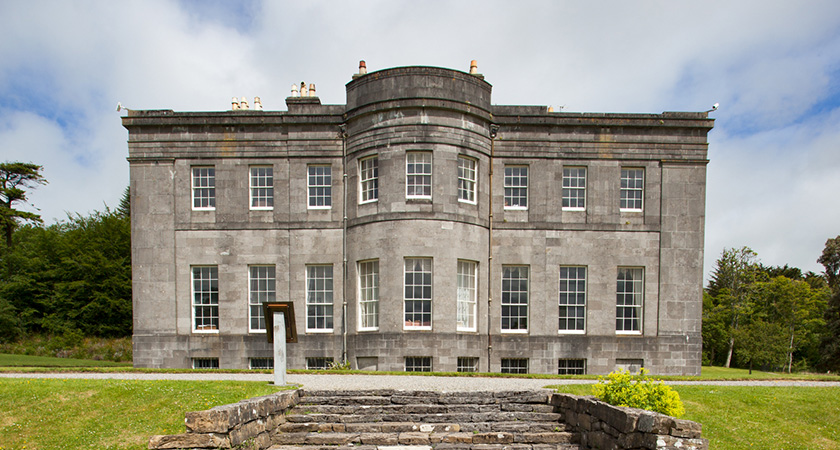
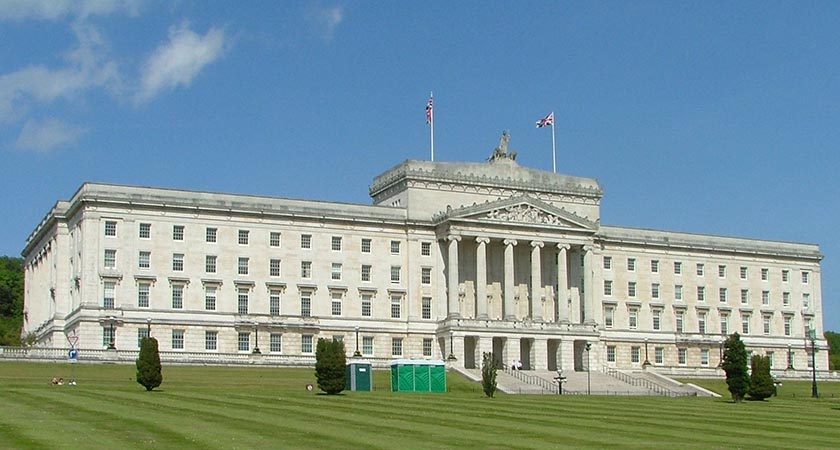
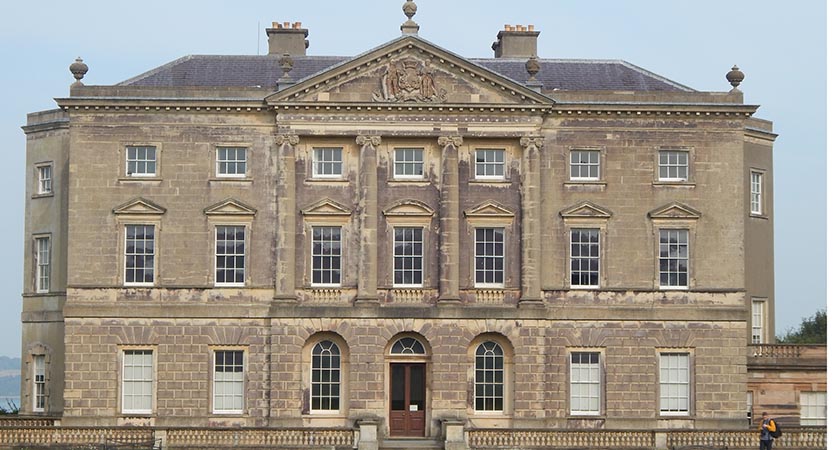
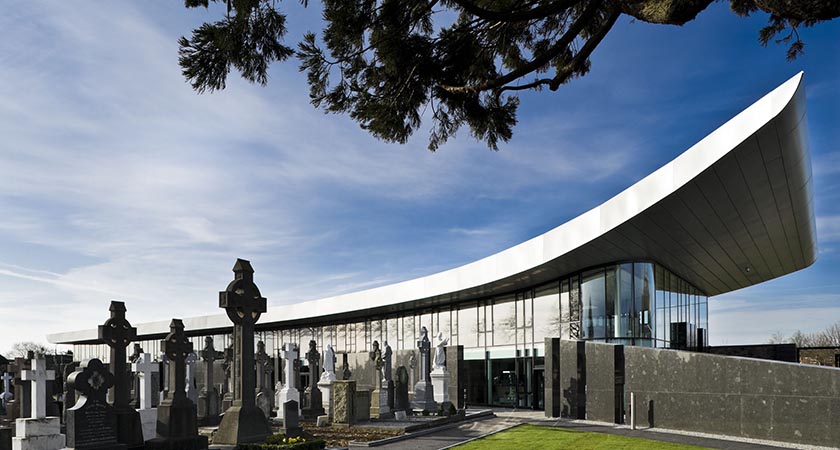
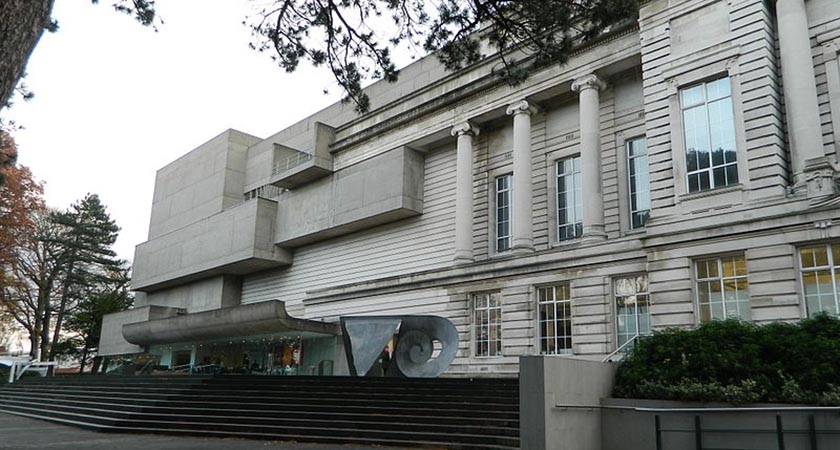
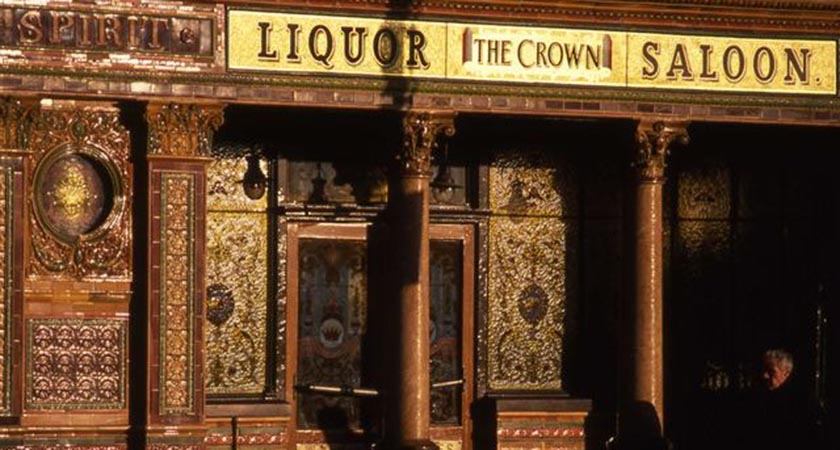
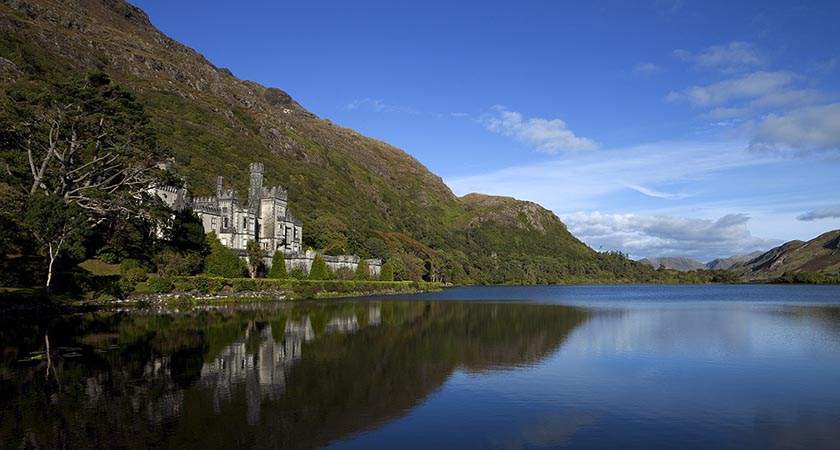
![Croke Park is expected to be filled to its 82,300 capacity this weekend [Picture: Inpho]](https://media.irishpost.co.uk/uploads/2015/09/Croke_Park_GAA_N.jpg)
